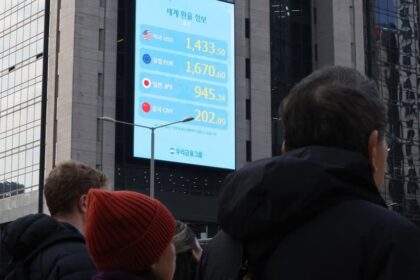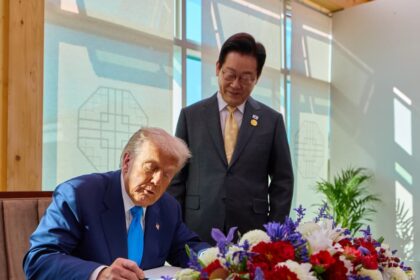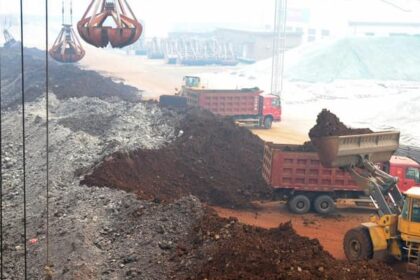The Return of Domestic Drug Labs in South Korea
South Korea, once hailed as a nation that had largely eradicated domestic drug manufacturing, is now witnessing a troubling resurgence of homegrown narcotics labs. After decades of strict enforcement and international embarrassment as a methamphetamine exporter in the 1980s, the country’s drug landscape is shifting once again. As authorities intensify border crackdowns to stem the flow of smuggled drugs, criminal networks are increasingly turning to domestic production, using imported chemical precursors to manufacture methamphetamine and other synthetic drugs within South Korea’s borders.
- The Return of Domestic Drug Labs in South Korea
- Why Are Drug Labs Making a Comeback?
- Recent Cases Highlighting the Trend
- Changing Patterns of Drug Use and Distribution
- Scientific Insights: Wastewater Analysis and Drug Trends
- The Role of Technology and Organized Crime
- Regional and Historical Context: The Korean Peninsula and Beyond
- Government Response and Policy Initiatives
- Broader Implications and the Road Ahead
- In Summary
Recent data from the Supreme Prosecutors’ Office reveals that in 2023, 23,022 people were apprehended for drug-related offenses—a significant decrease from the record 27,611 in 2022, but still a staggering 20-fold increase from the 1,190 cases reported in 1985, when drug crime statistics were first recorded. The number of drug manufacturing offenses, excluding cannabis, has also reached new heights, with 19 cases reported in 2024—the highest since type-specific statistics began in 2000.
Why Are Drug Labs Making a Comeback?
The resurgence of domestic drug labs is closely linked to the government’s success in tightening border controls. As authorities ramp up efforts to intercept smuggled drugs—seizing over 1,170 kilograms (2,579 pounds) of narcotics last year—criminal organizations have adapted by importing chemical precursors, many of which are similar to ingredients found in common cold medicines. These substances are often legally imported and distributed, making them difficult to regulate and track.
This shift has forced law enforcement agencies to redirect their focus from border interdiction to enhanced surveillance and investigative measures within the country. The challenge is compounded by the sophistication of modern drug operations, which now leverage technology, cryptocurrency, and the dark web to evade detection and facilitate transactions.
Recent Cases Highlighting the Trend
Several high-profile cases illustrate the evolving tactics of drug manufacturers in South Korea:
- Methamphetamine Lab in Suwon: Two Malaysian nationals were arrested for producing 9.4 kilograms (20.7 pounds) of methamphetamine in a building near Suwon Station, with an additional 9.1 kilograms (20 pounds) in production at the time of the raid.
- Cocaine Production in Gangwon: A Colombian national was indicted for attempting to manufacture 61 kilograms (135 pounds) of cocaine in a warehouse in Hoengseong, Gangwon Province, using precursors obtained in advance.
- Synthetic Drug Operation in Seoul: Earlier this year, a group was caught mixing imported precursors with nail polish remover and water to produce 3,420 milliliters (116 fluid ounces) of a synthetic drug in a hideout in Seoul’s Yeongdeungpo district.
These cases underscore the adaptability of drug traffickers and the growing complexity of domestic drug production in South Korea.
Changing Patterns of Drug Use and Distribution
South Korea’s drug problem is not limited to manufacturing. The patterns of drug use and distribution are also evolving, with a notable increase in the involvement of young people and foreign nationals. In 2023, 60.8% of those caught for drug crimes were in their twenties or thirties—the first time this age group accounted for more than 60% of offenders. The number of teenagers apprehended for drug offenses dropped significantly, from 1,477 in 2022 to 649 in 2023, following a high-profile incident involving drug-laced drinks in Gangnam’s cram school district and subsequent stricter enforcement.
Drug trafficking and consumption are increasingly facilitated by social media platforms and the dark web, making it easier for users to access narcotics and harder for authorities to track transactions. Cryptocurrency payments and encrypted messaging apps like Telegram are commonly used to arrange deals, further complicating law enforcement efforts.
Accessibility and Pricing
Drugs such as methamphetamine and cannabis have become more accessible and affordable in South Korea. According to police and rehabilitation experts, a gram of meth can now be purchased for as little as 100,000 to 300,000 won (approximately $75 to $225), a significant drop from the 1 million won price tag a decade ago. Cannabis is even cheaper, with a gram costing 200,000 to 300,000 won. Transactions can be completed in minutes, often without any face-to-face interaction between buyer and seller.
Lim Sang-hyeon, head of the Gyeonggi Drug Rehabilitation Addiction Center, notes that the falling prices and ease of access are driving the surge in drug-related crimes:
“In 2010, one gram of meth cost as much as one million won, but now you can buy it for 100,000 to 300,000 won if you buy low-quality drugs.”
Scientific Insights: Wastewater Analysis and Drug Trends
To better understand the scope of drug use, South Korean authorities have turned to wastewater-based epidemiology—a scientific method that analyzes sewage samples to estimate community drug consumption. Recent studies have detected methamphetamine in all surveyed sewage treatment plants, indicating widespread use across the country. While the overall amount of drug residue in sewage has declined for four consecutive years, methamphetamine remains the most prevalent illicit drug detected, followed by amphetamine and ecstasy (MDMA).
Interestingly, areas with high concentrations of foreign workers, such as Incheon and Siheung in Gyeonggi Province, show methamphetamine usage rates at 141% of the national average. This demographic trend is reflected in the rising number of foreign nationals apprehended for drug offenses, which increased from 2,573 in 2022 to 3,232 in 2023.
Experts suggest that the decrease in overall drug residue may be due to a shift toward alternative or new psychoactive substances, prompting the Ministry of Food and Drug Safety to expand its analysis to over 200 substances, including medical and designer drugs.
The Role of Technology and Organized Crime
The digital age has transformed the drug trade in South Korea. Criminal organizations now use encrypted messaging apps, cryptocurrency, and the dark web to conduct business, making it increasingly difficult for authorities to intercept communications and trace financial transactions. Some high school students have even been found acting as kingpins, employing adults to distribute drugs and using sophisticated money-laundering schemes to conceal profits.
One notable case involved a group operating a cannabis farm in western Seoul, using an illegal cryptocurrency website to receive payments and launder money. The integration of drugs, the dark web, and cryptocurrency is a growing concern for law enforcement, who must now contend with both physical and digital aspects of the drug trade.
Expert Perspectives
Lim Jun-tae, a police and criminal justice professor at Dongguk University, highlights the diversification and increasing frequency of drug crimes:
“Crimes reflect the current easy access to drugs.”
Yoon Hae-sung, a researcher at the Korean Institute of Criminology and Justice, emphasizes the need for systemic support and digital investigations:
“Crimes are now even reaching minors because the issue of drug trafficking is not being dealt with appropriately. Systemic support is needed such as by allowing digital investigations, which have been blocked for invading privacy.”
Kim Gi-bum, a forensic professor at Sungkyunkwan University, calls for inter-agency cooperation:
“Seeking cooperation to draw up responsive measures to new forms of crimes that involve drugs is necessary. Even governmental ministries need to collaborate with investigative authorities to come up with policies.”
Regional and Historical Context: The Korean Peninsula and Beyond
South Korea’s current drug challenges cannot be viewed in isolation. The Korean peninsula has a complex history with narcotics production and trafficking. In the 1980s, South Korea was internationally shamed as a methamphetamine exporter, but a government crackdown dismantled most domestic labs. Meanwhile, North Korea has long been suspected of state-sponsored drug production, including methamphetamine and opium, with reports of government involvement dating back to the 1970s. While the North Korean regime denies any illegal drug activity, defectors and international agencies have documented widespread drug use and trafficking, some of which may impact South Korea’s drug landscape.
Regionally, the civil war in Myanmar has fueled a surge in cross-border drug trade, particularly methamphetamine and heroin, affecting neighboring countries like Thailand. The proliferation of “super labs” in Myanmar and the resulting drop in meth prices across Southeast Asia suggest that South Korea’s drug market is influenced by broader regional dynamics, including the availability of precursors and trafficking routes.
Government Response and Policy Initiatives
In response to the resurgence of domestic drug manufacturing and the evolving nature of drug crimes, South Korean authorities are implementing a range of measures:
- Overseas Cooperation: Prosecutors are expanding international collaboration by dispatching narcotics investigators to major exporting countries as part of a “pre-emptive strike” system.
- Special Investigation Teams: The government has established a special investigation team of around 800 personnel, including prosecutors and police, to crack down on drug crimes, particularly those targeting minors.
- Focused Crackdowns: Joint task forces are conducting targeted operations in areas with high foreign populations and at-risk facilities.
- Expanded Surveillance: Authorities are increasing the use of digital investigations and data science to track drug distribution and consumption patterns.
- Public Awareness Campaigns: The Ministry of Food and Drug Safety is calling for a united public effort to eradicate illegal drug use and is expanding its monitoring to include a wider range of substances.
Oh Yu-kyung, Minister of Food and Drug Safety, underscores the seriousness of the issue:
“The detection of illegal drugs in all sewage treatment plants for five consecutive years is a serious issue that cannot be ignored. The government will continue to seek effective measures to address this problem.”
Broader Implications and the Road Ahead
The resurgence of domestic drug labs in South Korea signals a new phase in the country’s ongoing battle against narcotics. The adaptability of criminal organizations, the role of technology, and the shifting demographics of drug users all present significant challenges for policymakers and law enforcement. As the government intensifies its efforts to combat both domestic production and international trafficking, the need for innovative strategies, inter-agency cooperation, and public engagement has never been greater.
While recent statistics show a decline in the number of drug offenders compared to the previous year, the long-term trend points to a persistent and evolving threat. The experience of the 1980s serves as a cautionary tale, reminding South Korea of the importance of sustained vigilance and adaptability in the face of changing drug trends.
In Summary
- South Korea is experiencing a resurgence of domestic drug labs, particularly for methamphetamine, after decades of decline.
- Tighter border controls have pushed criminal networks to import chemical precursors and manufacture drugs locally.
- Drug crimes are increasingly facilitated by technology, with social media, the dark web, and cryptocurrency playing key roles.
- Younger people and foreign nationals are more involved in drug offenses, with methamphetamine use particularly high in areas with large foreign worker populations.
- Wastewater analysis confirms widespread methamphetamine use, despite an overall decline in drug residue.
- The government is responding with enhanced surveillance, international cooperation, and targeted crackdowns, but the adaptability of drug traffickers remains a major challenge.
- Regional dynamics, including drug production in North Korea and Myanmar, influence South Korea’s drug landscape.
- Experts call for systemic support, digital investigations, and inter-agency collaboration to address the evolving threat.












